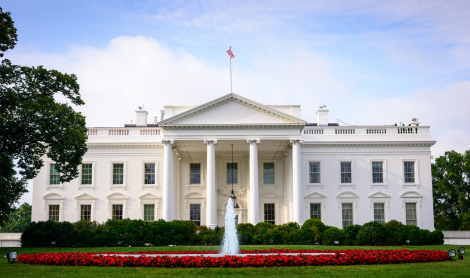Crossposted at the Michael & Susan Dell Foundation.
Closing schools, district or charter, is almost always difficult and disruptive.
We should not pretend, though, that the disruption that comes with closure is worse than the consequences of maintaining schools that fail to educate students year after year. Kids in failing schools need and deserve better options. Sometimes, the best way to create those options is to close one school and create a new one in its place.
In November, the National Association of Charter School Authorizers (NACSA) announced itsOne Million Lives campaign, a multipronged effort to expand quality options for kids by closing charter schools that are chronically failing and replacing them with new, high-performing alternatives. NACSA wants it to be easier to start schools most likely to succeed, harder to start schools that are likely to fail and easier to shut them down if they do.
The success of this effort depends on the willingness of authorizers to close chronically failing charter schools, and the ability of authorizers and school leaders to open many more better-performing options to replace them.
To succeed, we must:
- Focus on school quality, not school type: The goal is to create thousands more great public schools. New schools can be district-initiated or chartered—what matters is that they are quality schools. While school closures get most of the media attention, cities like Chicago, Denver, New Orleans and New York have opened dozens of new schools over the past decade, many of which have demonstrated enormous academic gains with kids who existing schools have historically failed to serve.
- Lower barriers to the creation of new, high-quality schools: Instead of fighting the creation of new schools, school districts and community organizations can embrace them and their entrepreneurial leaders as partners in a shared endeavor. They can call for new schools to meet specific local needs and act to ensure that schools are accountable for meeting their performance expectations and for protecting the interests of students and the public. Where collaboration is not possible, states can create an alternative pathway to authorize promising new charter schools that would otherwise be blocked by hostile districts. Instead of fighting the competition that new schools bring, a growing number of states like Louisiana and Tennessee, and districts like Denver and Chicago now issue annual open invitations for applications from school developers seeking to open new schools.
- Coordinate school closings with new school openings. The opponents of closing chronically low-performing schools are right to demand that students in schools that are closed be given better options. But the sad reality is that in many communities better options don’t exist. This can’t be a reason to leave kids in failing schools. The best way to create better options is to create new schools.
- Use existing resources creatively: Closing schools doesn’t have to mean closing school buildings. Creating new schools doesn’t always require building new school facilities. By offering space to new schools in unused or underutilized buildings, districts can generate revenue from previously wasted space while at the same time helping new schools lower their facility costs— often the biggest obstacle to new school creation. Allowing new schools to open in existing facilities can help to revitalize struggling communities and turn unused assets into new opportunities.
- Approve new schools carefully and allow only those with demonstrated results to replicate: The newly released CREDO study confirms once again the importance of a rigorous application and approval process for new school creation, and highlights the need for thorough due diligence and decisive action to ensure accountability for all new schools. Innovation depends on our willingness to take risks, but those risks should be calculated in favor of likely success and accompanied by a demand for results. The country’s best charter school authorizers both encourage innovation and manage risk. Recently, authorizers in places like Indiana, Maine and Pennsylvania have demonstrated that openness to new ideas does not mean lowering standards for quality.
- Establish high standards for performance. New schools—like all schools—should be judged by their results. Common performance standards create a level playing field and keep the focus on outcomes for kids. More and more authorizers across the country—in places like Arizona and Delaware—are adopting new, multi-dimensional school performance frameworks to evaluate the academic, organizational and financial health of their schools, and to hold all of them to the same high expectations.
- Ensure accountability for all schools and for those that authorize them. Schools should be held accountable for the performance of their students, and authorizers should be held accountable for the schools they authorize. Policy-makers can make it easier to hold schools accountable by establishing default closure provisions for the lowest-performing schools and accountability for authorizers who fail to perform.
Creating thousands of new, high-performing schools is an enormous challenge, but it is one we can collectively meet. Hundreds of thousands of students all across America lack access to a quality school. New schools are not a panacea, but with strong authorizing, smart policy and entrepreneurial educators, they can be one of our most powerful tools in the struggle to give all children the opportunities they need and deserve.


